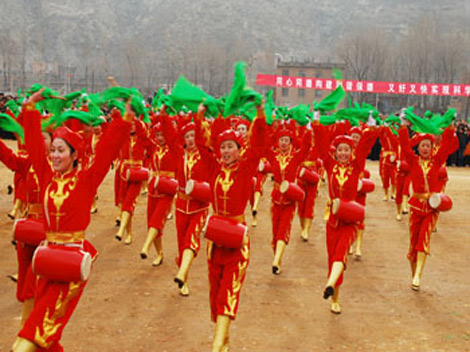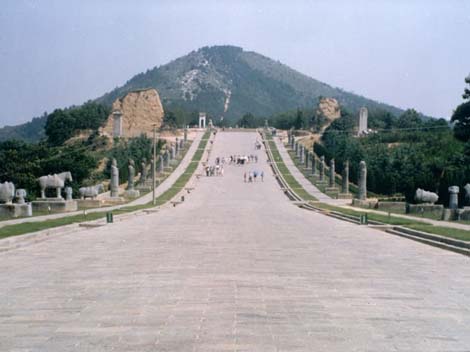| Home > China Feature |
Nanjing Decade
The Nanjing decade was the decade from 1927 (or 1928) to 1937 in the history of the Republic of China. It began when Nationalist Generalissimo Chiang Kai-shek took the city from Zhili clique warlord Sun Chuanfang halfway through the Northern Expedition in 1927. He declared it to be the national capital despite the other Nationalists already having made Wuhan the capital. The Wuhan faction gave in and the expedition continued until the rival Beiyang government in Beijing was defeated in 1928. The location was of symbolic and strategic importance. It was there that the republic was established and where Sun Yat-sen's provisional government sat. Sun's body was brought over and placed in a grand mausoleum to cement Chiang's budding personality cult. Chiang was born in the neighboring province and the general area had strong popular support for him.
While the Nanjing decade was far more stable than the preceding warlord era, it was still beset with violence. Civil war with the communists continued unabated in the country-side. In 1930, the Central Plains War erupted pitting President Chiang against Yan Xishan, Feng Yuxiang, Li Zongren, and party leftists like Wang Jingwei. Though victorious, Chiang's government was bankrupted. In 1931, Chiang faced another uprising by Li Zongren, Chen Jitang, and the party's civilian leadership led by Hu Hanmin. The war was averted due to the Japanese invasion of Manchuria but it did cause Chiang to resign as president and premier. Chiang's control of government policy was unimpeded due to the support of the Whampoa clique of military officers and the Central Clique. In 1933, the Fujian Rebellion erupted by dissident KMT elements. In addition, the Ma clique and the Xinjiang clique, both KMT affiliates, were contesting each other in the western fringes from 1931 until 1937 when the Soviet Union's support help Xinjiang triumph. During Chiang's second premiership, he was kidnapped by Zhang Xueliang and forced to ally with the communists in the Second United Front in 1936.
China's first government sponsored social engineering program began in 1934 with the New Life Movement. In addition, non-governmental reforms, such as the Rural Reconstruction Movement made substantial progress in addressing the problems of the countryside.
The decade came to an end with the Second Sino-Japanese War. Being located near the coast, it was vulnerable so the capital was moved to Chongqing for the duration of the war. While the transfer of the capital marked its political end, the symbolic end was the Nanking Massacre (the Rape of Nanjing) when up to 300,000 inhabitants died during the Japanese occupation.
Art
 more
moreYicheng Hua Gu
The Flower Drum 花鼓 of southern Shanxi Province is a kind of folk d...

Sculpture in Qianling Mausoleum
The sculpture of Qianling Mausoleum is the main relic of the ground ...

A Sweet Art:Sugar Painting
In and around China’s southwestern Sichuan Province, it is usual to ...

Custom
 more
moreWeb Dictionary
Martial Arts
Bruce Lee
There’s a new biopic of martial arts expert Bruce Lee ahead of us....
Wudang Martial Arts
Wudang Wushu is one of the key schools of Chinese martial arts. ...
Wuxia, a Popular Culture for Most Chinese-Speaki...
Wuxia (武侠) is a broad genre of Chinese fiction that concerns its...





 print
print  email
email  Favorite
Favorite  Transtlate
Transtlate 







